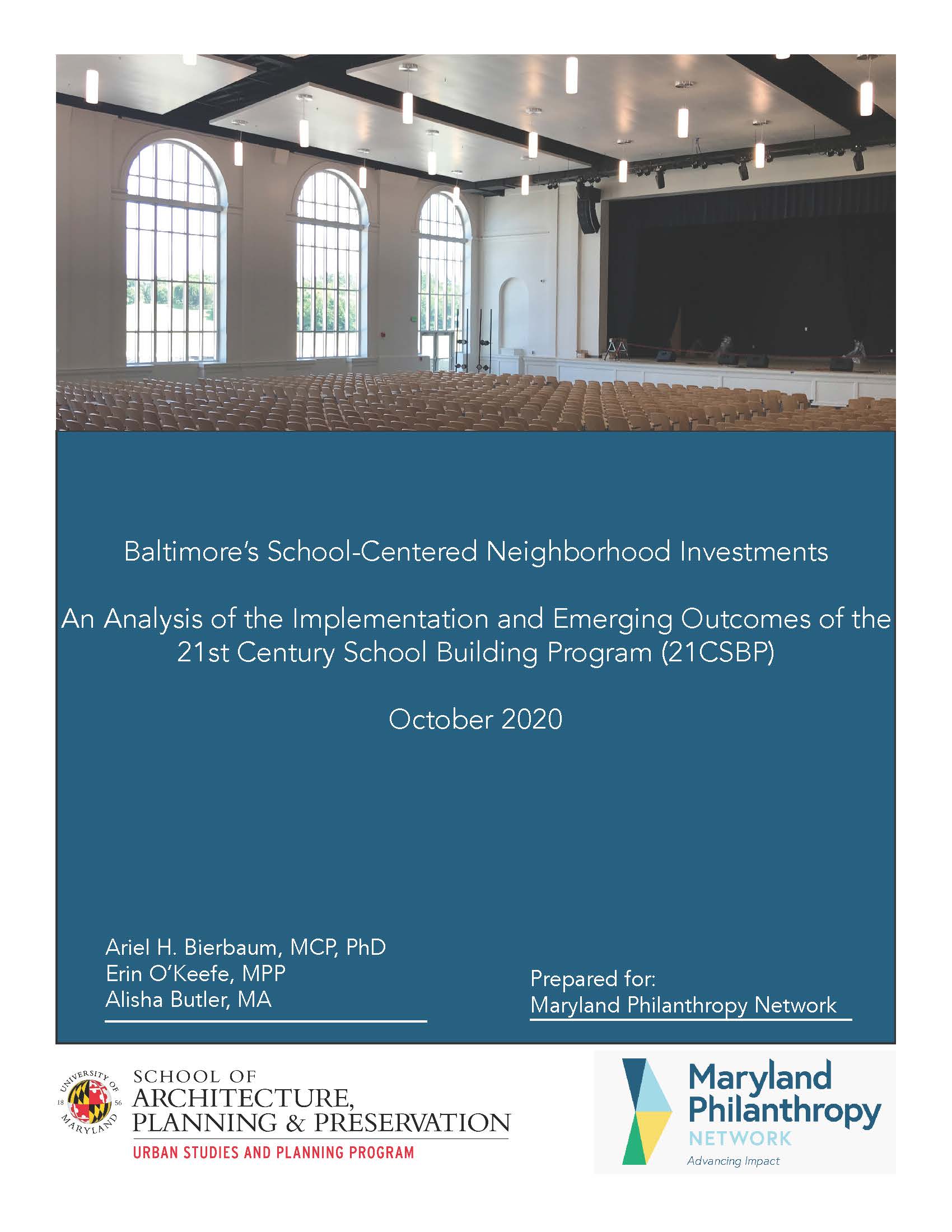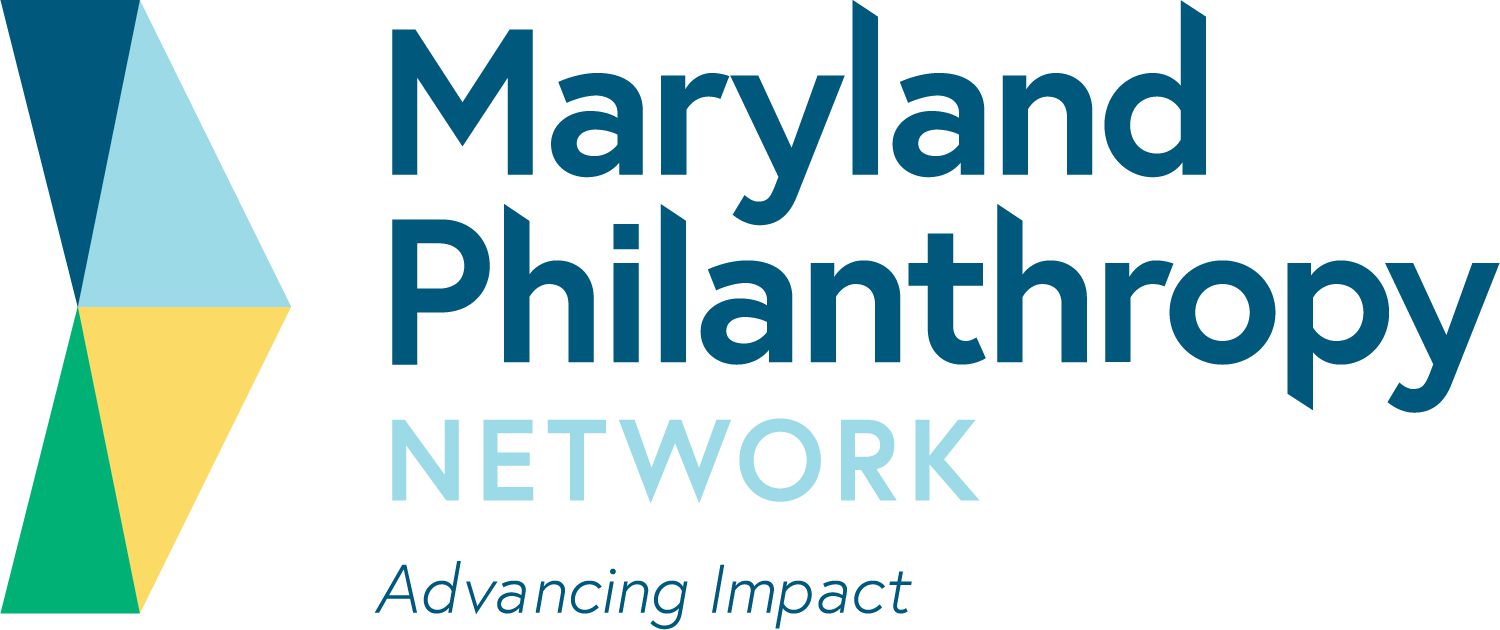Baltimore's School-Centered Neighborhood Investments: An Analysis of the Implementation and Emerging Outcomes of the 21st Century School Building Program

Baltimore’s School-Centered Neighborhood Investments: An Analysis of the Implementation and Emerging Outcomes of the 21st Century School Building Program (21CSBP)
October 2020 | Authors: Ariel H. Bierbaum, MCP, PhD; Erin O’Keefe, MPP; and Alisha Butler, MA
The 21st Century School Buildings Program (21CSBP) is an unprecedented state and local investment in the renovation and construction of Baltimore City Public Schools System (BCPSS) schools. The State of Maryland’s Baltimore City School Construction and Revitalization Act authorized the Maryland Stadium Authority (MSA) to leverage $60 million into bond money, providing $1.1 billion in funding to support the renovation and/or replacement of Baltimore City public schools. The Maryland Philanthropy Network’s (MPN) School-Centered Neighborhood Investment Initiative (SCNII) aims to leverage this historic investment not only for schools but also for their surrounding neighborhoods. SCNII’s vision positions the
new and renovated schools as community assets and anchor investments that can strengthen communities, increase homeownership, and attract new real estate and business investments.
MPN SCNII funded our research team to conduct an initial analysis of the 21CSBP efforts. The analysis sought to document the 21CSBP’s implementation process, understand the complex relationships among responsible agencies (BCPSS, the MSA, and city agencies), and explore the implementation and emerging outcomes of the program in three neighborhoods. Between November 2018 and March 2020, our team reviewed documents provided by the MPN SCNII committee, analyzed administrative data on neighborhood and school characteristics, conducted participant observations of meetings and events, and interviewed philanthropic stakeholders, advocates, BCPSS and city agency staff, non-profit staff, and other community-level stakeholders.
This report’s findings reflect data collected and analyzed in “the before” – before COVID-19 became a global pandemic and before widespread protests for racial justice happened in the wake of the murder of George Floyd in Minneapolis. The COVID-19 pandemic, in particular, fundamentally altered access to school buildings and re-affirmed the importance of schools not only as a site of learning but also as a source of meals, services, and safety for many communities. Together, these two events brought to the forefront five overarching questions about the 21CSBP:
- What is – and what should be – the role of a “community school?”
- How do we define “community,” and who in the community has the capacity to partner?
- What systemic change would build equity and reverse the harms that racist policies and practices have caused minoritized communities in school and neighborhood development?
- What are holistic and meaningful measures of “impact”?
- Can 21CSBP simultaneously meet the educational and social-emotional needs of students and the opportunity for community development in neighborhoods?
These five questions bridge our findings with the current context and aim to prompt reflection and additional conversations about the 21CSBP in the face of the “dual pandemics” of COVID-19 and systemic racism in the United States.
FIND MORE BY:

